This is an autobiography of the works I have done, the stories, the places I have been and the events transmitted through poems, paintings, drawings, sound and photographs-narrating the blessedness of the interesting times one lives in. In Autobiography and Beatitudes, personal history and the blessedness of living, I have drawn from a broad-based and expansive period of work that, hopefully, at the dusk of my youth, draws the portrait of a Nigerian artist. The exhibition wouldn’t have been possible without the help of great friends, people have I met-parents, teachers, art enthusiasts, spiritual director, and role-models. They are my core SWAT group for staying sane and solvent in this madness. Maybe I had art in my genes. I had an artist uncle called Idika who lived in the US. His works were in my grandfather’s parlour and in our home in Owerri. Aunt Imelda, his younger sister was said to be an excellent draughtsman also. There was my mom, the teacher and fashion designer. Her integrated science note books revealed her good draughtsmanship. Insects were drawn with fluid strokes and neatly too. This made a great impression. Dad opened the magical world of books and dreaming. He bought my first dictionary when I was in primary three. He would return from his travels with two cartons-one of books and chocolates. Before I got to secondary school, I was introduced to the African Writers Series. I soon started reading through his library.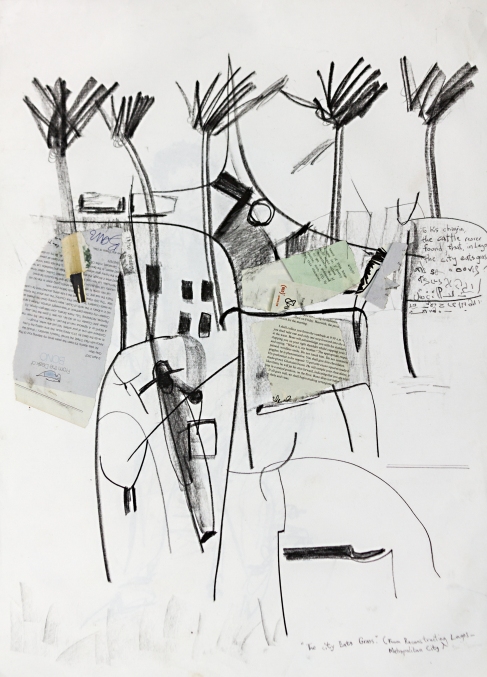
My earliest memories of a peculiar artistic intuition were those days in Owerri looking into the skies and seeing clouds that formed the impressionable scenes from Charlton Heston’s portrayal of Moses in the hit movie, The Ten Commandments. I would look into those bulbous skies and draw what I saw in the dust in front of our brick house.
The other teachers that taught me all impacted strongly by their actions-dissuading me from certain paths, inspiring, encouraging, nurturing. I was helped greatly by my spiritual director at a time when I desperately needed a role model. Father Boniface formed my mind and taught me to look backwards and see blessings of God that have come my way, to see all actions as parts of a great plan for good. That is the theme, my story. Autobiographies must necessarily begin from the beginning, the origins of being and self-realization.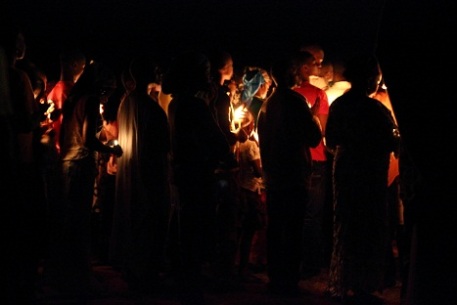
There were the pencil drawings of my mother I made from the black and white photographs in our parlour, and the high praise from both classmates and teachers in primary school. A certain doctor friend named John Ojukwu, who I met in Enugu, while recuperating from a life-threatening accident at the University of Nigeria Teaching Hospital also helped. He brought me those art activity books that had dots that one could put together to form a picture, and black and white drawings that left one the opportunity to paint in the right colours, guided by words. Those books also had scaled drawings that one could replicate on a larger scale in the opposite page. I was twelve years old, at the time. Some of these ideas have stuck and remained relevant to my practise as an artist.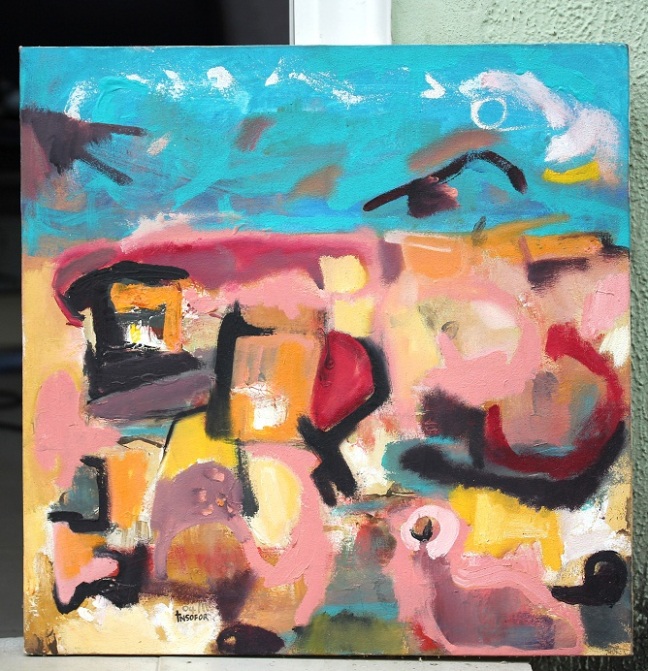
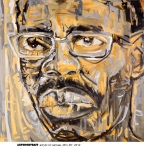
Of my set at Federal Government College Okigwe, Ugochukwu Uwadi and I were the only students who studied Fine Arts in Senior Secondary class. We had excelled through the rudiments of Art in junior school, moulding “Madonna and Child” clay works; and creating painting compositions of lions and zebras in savannahs; drawing the burnt ruins of a parked water-tanker (which the students of the secondary school burnt in an anti-government demonstration inspired by students from nearby Abia State University, marching against the regime of President Babangida). Before I left Okigwe, I became Art Club president and tried to foster more appreciation for the Arts through narrations of Art History, and drawing classes organised for my fellow students. As I taught them, I believed more firmly the things I said. In art class though, my work process was very irregular and full of bursts of energy and ebbs. Mr Fadeyi, the art teacher, got frustrated at some point and told me that I would never make it as a professional artist. I am still working. An obvious career option was Law, to become like my Commissioner for Justice father, who had groomed me to enjoy reading literature, stories and poetry. When the time came, I told him that I would study Art first, and read Law as a second degree.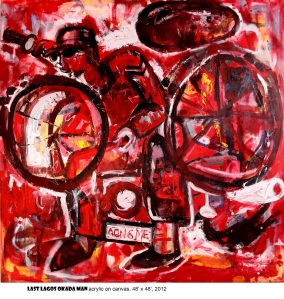
University of Nigeria, Nsukka has the ideal serenity for painting landscapes and rustic life. I met some brilliant art educationists. Professor Obiora Udechukwu had been my dad’s contemporary in Nsukka. His art classes encouraged awareness in building the creative process. With this mind-set, we as students were exposed to stimuli. We were forced to interpret titles drawn from poems and classical music (“Mother Idoto”, and “Rhapsody in Blues”); and held discussions of essays on art written by famous English writers, etc. In my third year, I worked in his Odenigwe studio as an assistant and had the privilege to learn and see his works. The art historian and painter, Professor Chike Aniakor’s enthusiasm and lyricism were highly infectious, and we enjoyed his studio critiques. There was the Art historian Professor Ola Oloidi whose character was a delight to all the students and the slightly withdrawn Professor El Anatsui, who once gave me an unforgettable demonstration of how balance should be applied in a sculpture. I made friends with Chika Okeke-Agulu and Krydz Ikwuemesi. They were Master’s degree students who later became my lecturers at Nsukka. Ikwuemesi explained to me how irregular strokes around the head give liveliness to portraits. Chijioke Onuora, the drawing teacher was the students’ darling. His “Tuff Studio” at Onuiyi was open to any student who needed a place to work in, outside the students’ studio in the department. Okeke-Agulu’s studio, “House of Hunger”, was a few blocks away, and I was one of the few students allowed to visit. He lent me books on art criticism and encouraged me to write essays for the newspapers. He also gave new meaning to the word ‘ambition’. Okeke-Agulu wanted us students to create voraciously, to also think big, to be ambitious.
Alongside Anaele Iroh aka ADIS, and Sukanthy Visaggaperumal, and Stanley Aneto, we organised a daring exhibition at the Margaret Ekpo refectory on campus. We handmade and printed the red-cover page of the catalogue for the exhibition titled Why the Caged Bird Sings. That exhibition was seen by many students at Nsukka, who would either come to eat at the refectory, or just to the Freedom Square. I recall one such student, Patrick Okigbo who stayed to hear my lengthy explanation of State of the Nation, (1996) an 8 x 4 feet oil painting of writhing nude bodies, horses, and a soldier. Decades after graduation, we would meet again in an exhibition at Omenka Gallery (Lagos) were he collected my acrylic painting titled Today is Red, Red, Red (2007). 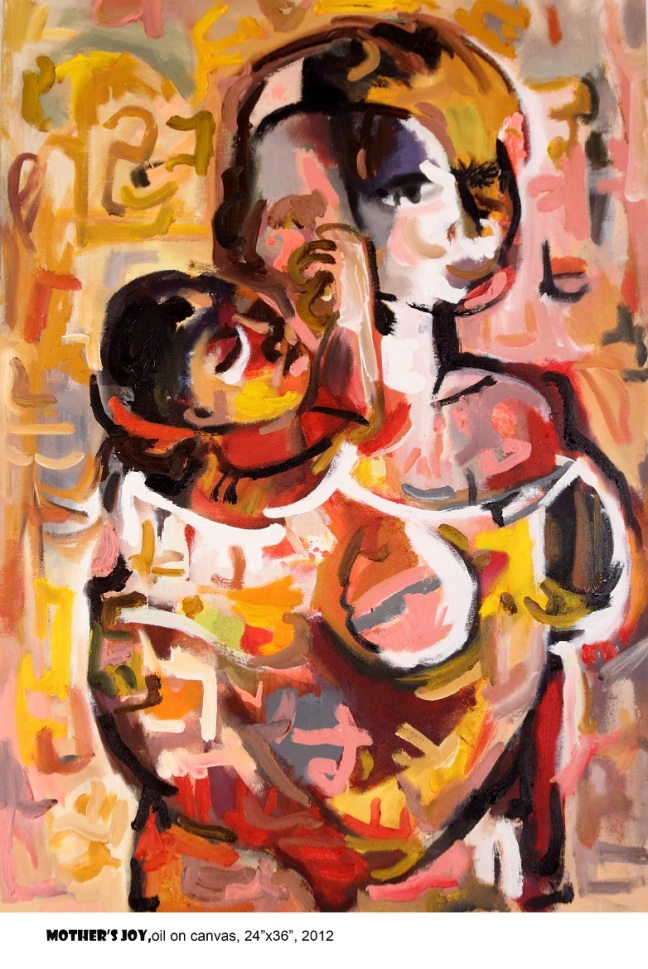
Another exhibition, 6 New Painters from Nsukka (1996) at the British Council, Enugu, featuring my works alongside those of five classmates Okechukwu Ogamanya, Obinna Amoke, Sukanthy Visaggaperumal, Stanley Aneto, Onyema Ezeudu, and organised by Obiora Udechukwu and Chika Okeke-Agulu would be our signature announcement to the world. We were singled out of the forty-nine students in final year class when we took a stand in support of the strikes organised by the lecturers and students against the government. Then came the dispersal- people fled the nation into self-exile; others were hounded by government forces; while others were forcefully retired from lecturing jobs. Those were the days of letter-bombs, and assasinations, corruption of the academy, and the hanging of Ken Saro Wiwa. Of course, my interactions with some of the students then, particularly in the Fine Arts department (some who were in higher classes) with Blaise Gundu Gbaden, Marcia Kure, Chimezie Chuta, Sukanthy Visaggaperumal; my familiarity with the works and legends of Sly Ogbechie and Olu Oguibe who had graduated years before; and my encounter with Gbugbemi Amas ran a sculpture studio in Nsukka, and would come to talk to the students about the inappropriateness of the school’s curriculum-all contributed to and impacted my life as an artist. I travel a lot, and have been blessed by many meetings and relationships. These meetings have moulded the creative spirit to move in new directions and to acquire new energies.
The length of days, particularly well spent days, makes the story long. Upon graduation, I opened a studio in Owerri with the help of my uncle Tony who gave me an expansive duplex office space gratis. This allowed me to start off life professionally with an audacity and experimental creativity that has continued. The depressive military era had caused a lot of young graduates to travel abroad, and Adis came with stories of Lagos and about relocation. I listened. I squatted with Julie my sister for years in Lagos, making some of the “spirits” (as mother would call my paintings) that she faced to the wall in rejection. I visited the popular galleries then- Signature, Nimbus and Mydrim, and had some luck selling a few works to Signature Galleries. I also sold some to Oladeinde Odimayo, and Narcissus Gallery, Ikeja. Somehow, most of the works I have sold were to private buyers and collectors, some of whom I believed did not understand my work but acquired it because it was different. I must have survived those days with the support from friends and family members, and the occasional collector who will buy many works at once.
Painting did not become a bread and butter-making occupation for me at any given time, as I never forgot El Anatsui’s advice that one should not be an artist to make money. I had chosen to paint, to communicate inner urges, to interact with my space, and I had the support system that allowed for this liberty. I had also done other things besides (working as an art writer for the Art Desk of the defunct Comet Newspapers; at Angela Onyeador’s the African Foundation for the Arts; and more recently at the Whitesands School, an all-boys day secondary school in Lekki) Parents and teachers play a key role in the formation of the child. This idea became clearer to me when I worked briefly as an art teacher at the Whitesands School. I benefited greatly in that school by a Principal who encouraged innovative learning methods.
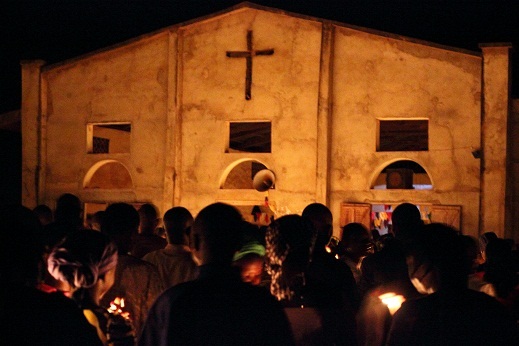 My inclusion in the group exhibition With a Human Face (2006) organised by Jess Castellote for the Lagos Business School was the beginning of a beneficial relationship. The institution has some of my works on display in their halls, notable of which is the massive three-piece oil painting titled ‘There were ten virgins when the bridegroom came’ (2006). The Pan African University also hosted my solo exhibition at their Victoria Island campus.
My inclusion in the group exhibition With a Human Face (2006) organised by Jess Castellote for the Lagos Business School was the beginning of a beneficial relationship. The institution has some of my works on display in their halls, notable of which is the massive three-piece oil painting titled ‘There were ten virgins when the bridegroom came’ (2006). The Pan African University also hosted my solo exhibition at their Victoria Island campus.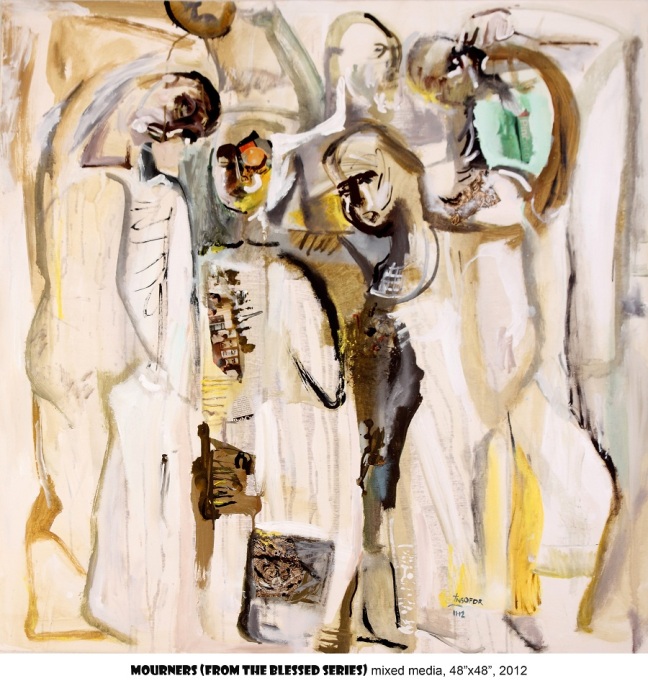
While convalescing at Igbobi, I registered as a member of the Society of Nigerian Artists in the period of Olu Ajayi’s presidency. Never attending the Society’s meetings, I also rarely attended exhibition openings were people mope and block one’s view. For inspiration, I lived a robust night life, hanging out at the clubs in Ikeja with Area Boys and visiting Fela’s Shrine. I became sympathetic with the call-girls and shady characters who wore masks to hide their ugly lifestyles. I saw a new aesthetic appear, based entirely on assessment of the different sides of the story of men and women. Physical beauty became but a fleeting glance at the soul. The subject of my portraits, became contrived beings that I built up like a carpenter, latching on to “unconscious accidents” in colour application and management, discarding (almost entirely) a sense of perspective or proportion.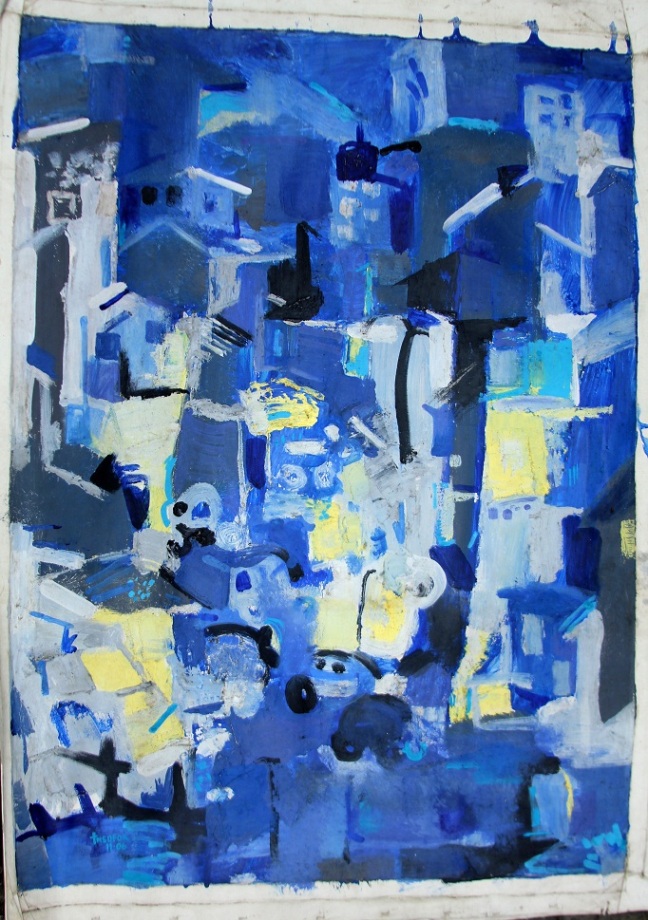
The acrylic medium has a spontaneity suited to my workflow. Using mediums like retarders and pieces of newspaper and fabric, I join patterns and patches like a tailor, and then create distances of Time to assess the authenticity of the idea. If the idea is present for long on my canvas, then it is legitimate; not a whim. Occasionally the idea is a known, with a sketch or reference to start on. Other times it is achieved after several rewritings through the years. The work has a different, inherent life force that grows outwards. I have often embraced people’s interpretations, urging them on enthusiastically. The audience completes the process, and I encourage them. As a product of society, the artist gives and takes generously, every time; the work belongs to me as much as to the buyer, collector or audience.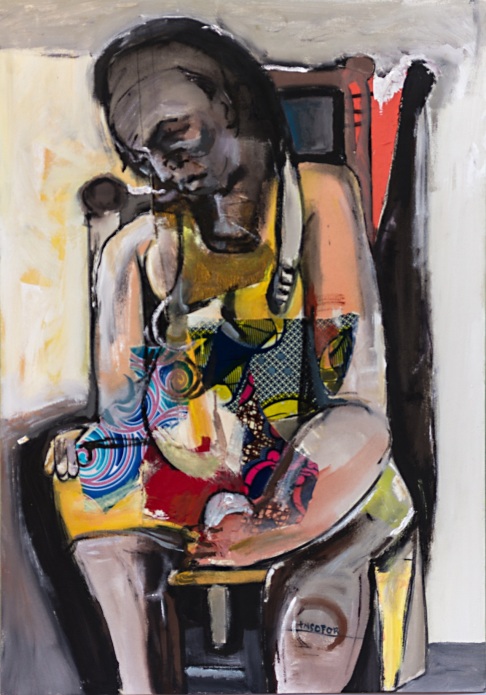
I drank at arty places like the French Cultural Centre and Bogobiri, and seedy joints like Ynot. My drifting took me to the beaches to hang out for picnics at Jagunlabi’s, to walk, think and sometimes to paint the landscape. Dilomprizuluike, “the Junkman of Africa”, lived in Alpha Beach, a popular haunt. El Anatsui once labelled him “the only artist working in Lagos”. He lived Art. On a visit to his “Junkyard Gallery of Awkward things”, I had a strong awareness of the presence of the Object-as-Art around us. I sat in junk beside him in his “painted” yellow jeep, driving through Lagos traffic. He would occasionally stop by the roadside to pick up discarded objects which he saw as “Art”- things imbued with life and an ability to convey a message. He was a great inspiration. I recall my impression of his “house”- a place that had no visible walls or geometrical regularity; I compared it to my paintings. I seemed to paint with a similar familiarity. Before he left for Germany, he gave me some of his fashion drawings from his show at Goethe Institut. He also asked that I stay in his house. I never did, but some of my works relive the experience of that space. I am not sure which came first, the experience that led to the work; or the work, that has similar attributes with the space. I am not about making assertions of originality here. Rather, I will continue in gratitude for all-the pains and joys I have known, the people and places I have been, and the things that happened to me and the things I have done. As in one of my paintings, Memories grow long and become the thing around your neck (both to choke and hang you; or to beautify and adorn you), 2009, my reading of Memory is optimistic.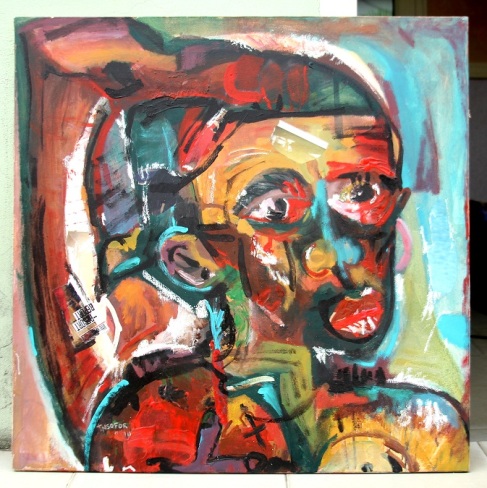
With several long stays in hospital and scars of surgical blades came a familiarity with pain, and knowledge of the transience of life. The most recent and greatest sorrow came when my mother died last March. I sought reason and direction, and felt a dark cloud hovering. Then the words of Christ in the Beatitudes had new meaning to me, and became a survival chant. Soon I started recollecting the gestures of sorrow and wailing. We deal with sorrow differently, I told my siblings. These ideas were soon reflected in my paintings from the period. It was about Sorrow, tears and blood. I have also known many joys. For all, I am grateful.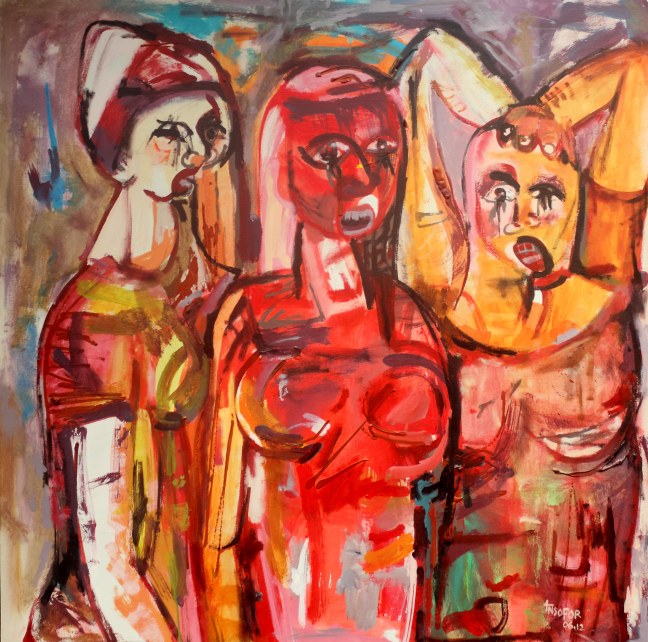
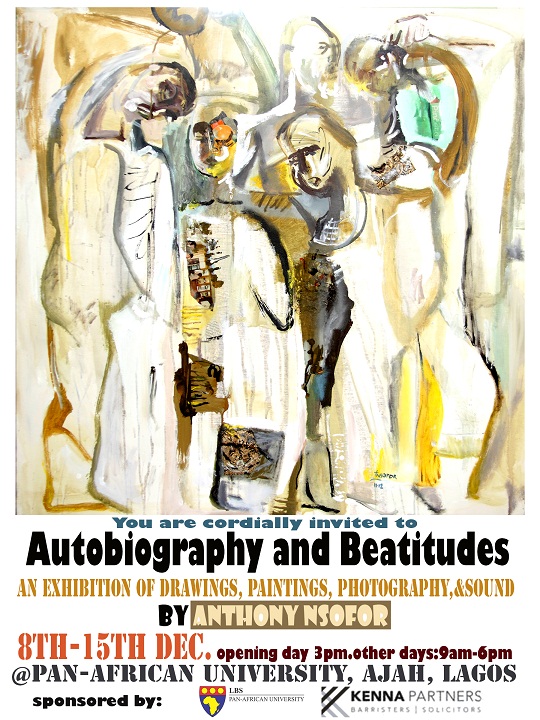
Tony Nsofor is a” mad man” of our time. His works oscillate between him and “the other end”.
HYACINTH EZE Jr. (Fela)
LikeLiked by 1 person
Fela we have been friends long now… that ‘craze’ comes from this tropical sphere, from living in this mad space where a lot doesn’t make sense.
LikeLike
Nice works….well done!
LikeLiked by 1 person
Nice one…I like your works. Well done!
LikeLiked by 1 person
God bless you Tolu! It means a lot
LikeLike
You are an artist!!!
LikeLiked by 1 person
I try to be more, Joy!
LikeLike
So moved by your art. How can I find more about it?
LikeLike
Thank you. I am on Instagram as anthonynsofor. You can send me an email to tony.nsofor@gmail.com and I will give you my WhatsApp number.
LikeLike